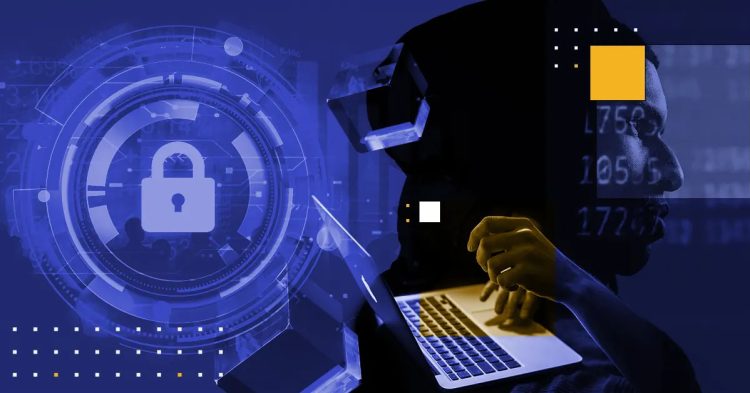In a world that’s rapidly transitioning into the digital age, one critical factor is becoming ever more prominent: cybersecurity. The transition to online platforms, digital technologies, and interconnected systems has led to major advancements in almost every industry. However, it has also introduced significant risks. Cyberattacks have grown in scale and sophistication, making cybersecurity a critical concern for companies of all sizes. As we move further into the digital era, ensuring the security of networks, data, and operations is no longer optional—it’s an imperative.
This article delves into why cybersecurity is rapidly becoming the next big concern for industries worldwide, examines the key threats that are shaping this landscape, and provides actionable insights on how organizations can protect themselves.
The Growing Importance of Cybersecurity in Industry
The Digital Revolution and the Need for Cyber Defense
Industries across the globe are undergoing a major transformation fueled by digitalization. From cloud computing and artificial intelligence (AI) to the Internet of Things (IoT) and blockchain, new technologies are reshaping how businesses operate. Companies are connecting their systems to the Internet, sharing massive amounts of data, and adopting digital tools to improve efficiency and productivity.
However, this digital revolution has a dark side. With increased connectivity comes increased vulnerability. Cybercriminals and hackers have become more organized, sophisticated, and relentless. The rise in cyberattacks in recent years has made one thing clear: cybersecurity is no longer just the responsibility of IT departments; it’s a matter for every business leader, as it impacts operations, finances, and brand reputation.
Cybersecurity as a Business Imperative
Gone are the days when cybersecurity was seen as a niche IT concern. Today, it is a boardroom issue. A breach can cripple a business, destroy customer trust, and lead to massive financial and operational setbacks. According to a report from Cybersecurity Ventures, cybercrime damages are predicted to cost the global economy more than $10 trillion annually by 2025.
It’s not just about protecting systems anymore—it’s about protecting the very foundations of your business. From customer data to intellectual property, every digital asset must be safeguarded to ensure business continuity. Moreover, in an era of heightened regulatory scrutiny, companies that fail to take cybersecurity seriously face the risk of severe penalties and legal consequences.

The Evolving Cybersecurity Threat Landscape
Traditional Cyber Threats
For years, the cybersecurity conversation focused largely on traditional threats like viruses, malware, and phishing attacks. While these threats remain prevalent, today’s attackers have become far more sophisticated and focused. Cybercriminals employ a wide range of techniques to exploit vulnerabilities in systems, often utilizing social engineering tactics to manipulate employees into providing access to secure networks.
Some of the most common cyber threats facing businesses today include:
- Malware: Malicious software designed to disrupt or damage systems, often by encrypting data or stealing sensitive information.
- Phishing: Fraudulent attempts to acquire sensitive data such as usernames, passwords, or credit card numbers by masquerading as a trustworthy entity.
- Ransomware: A type of malware that encrypts files or locks systems and demands a ransom for access to be restored.
While these threats are still very much present, they’ve evolved significantly, often leveraging more advanced methods to penetrate secure networks.
Advanced Cyber Threats: Ransomware and APTs
As cybersecurity measures have become more robust, cybercriminals have developed increasingly sophisticated techniques. One of the most alarming developments is the rise of Ransomware-as-a-Service (RaaS), where cybercriminals rent out ransomware tools to other malicious actors. This has made ransomware attacks more accessible to a broader range of attackers, increasing their frequency and scale.
Another growing concern is Advanced Persistent Threats (APTs). APTs are long-term, targeted cyberattacks that often involve multiple stages of infiltration and data exfiltration. These attacks are stealthy and typically carried out by well-funded groups, including state-sponsored hackers. The goal is to maintain access to a network for as long as possible to steal sensitive information or disrupt operations.
The impact of these sophisticated attacks is often severe, with significant costs related to downtime, recovery, and data breach penalties.
The Real-World Consequences of Cyberattacks
Cybersecurity breaches can have far-reaching consequences for organizations. These consequences go beyond immediate financial losses; they can affect customer trust, operational continuity, and even national security. Let’s look at some real-world examples:
- The 2017 WannaCry Ransomware Attack
One of the most infamous cyberattacks in recent years, WannaCry infected hundreds of thousands of computers across the globe, including those in hospitals, schools, and businesses. The ransomware exploited vulnerabilities in Microsoft Windows systems, causing widespread damage to organizations, disrupting services, and costing billions of dollars in damages. - The Equifax Data Breach
In 2017, Equifax, one of the largest credit reporting agencies in the U.S., suffered a massive data breach. Hackers gained access to the personal data of approximately 147 million people. The breach not only damaged Equifax’s reputation but also led to a settlement costing the company hundreds of millions of dollars. - The SolarWinds Hack
In 2020, a sophisticated attack on the SolarWinds software platform led to a massive security breach affecting thousands of organizations, including government agencies and major corporations. The attack, attributed to a state-sponsored group, exploited vulnerabilities in SolarWinds’ Orion software, providing hackers with backdoor access to sensitive systems.
These examples illustrate the wide-ranging impact that cyberattacks can have, from financial losses to long-term damage to an organization’s brand and reputation.
Key Factors Driving the Increasing Threats
Several factors are contributing to the increasing frequency and severity of cyberattacks across industries:
1. The Rise of Digital Transformation
As industries undergo digital transformation, they introduce new attack vectors. The migration to cloud computing, the integration of IoT devices, and the implementation of AI-driven systems all create new opportunities for hackers. Every connected device, network, and application becomes a potential target.

2. The Expansion of Remote Work
The COVID-19 pandemic accelerated the shift to remote work, creating new challenges for cybersecurity. Employees working from home often access corporate networks through unsecured networks, making them vulnerable to cyber threats. Additionally, remote work often leads to a lack of proper security measures on personal devices, further compounding the risk.
3. The Proliferation of IoT Devices
The Internet of Things (IoT) refers to the growing network of interconnected devices, from smart thermostats and wearable devices to industrial sensors and autonomous vehicles. While these devices offer convenience and efficiency, many have weak security protocols, making them attractive targets for hackers. A breach of an IoT network can lead to larger systemic risks, including the compromise of critical infrastructure.
4. Regulatory and Compliance Pressures
As data breaches become more common, governments worldwide are tightening regulations on data privacy and cybersecurity. The European Union’s General Data Protection Regulation (GDPR) and California’s Consumer Privacy Act (CCPA) are two examples of regulations that mandate strict data protection measures. Failing to comply with these regulations can lead to hefty fines, legal consequences, and loss of consumer trust.
Building a Robust Cybersecurity Strategy
As industries face increasing cyber risks, developing a comprehensive cybersecurity strategy is paramount. Here are some essential steps organizations can take to strengthen their defenses:
1. Adopt a Proactive Cybersecurity Culture
Cybersecurity is not just an IT issue—it’s a company-wide responsibility. Employees at all levels need to understand the importance of cybersecurity and be trained to recognize threats like phishing and social engineering. Regular security awareness training should be a staple in any organization’s cybersecurity strategy.
2. Implement Multi-Layered Security
A multi-layered security approach provides defense at multiple points within the network, making it harder for cybercriminals to succeed. This includes using firewalls, intrusion detection systems, antivirus software, and encryption protocols. Strong password policies and multi-factor authentication (MFA) can also help secure access to sensitive systems.
3. Regularly Update and Patch Systems
Cybercriminals often exploit vulnerabilities in outdated software. Organizations should establish a routine for regularly updating and patching their systems, ensuring they’re protected against known vulnerabilities. This includes operating systems, applications, and third-party software used by the business.
4. Backup and Disaster Recovery Plans
Data backup is essential for mitigating the effects of ransomware attacks and other forms of data loss. Regularly backing up data and ensuring that backups are stored securely can help organizations recover quickly in the event of a breach.
5. Monitor and Respond to Threats in Real Time
Implementing real-time monitoring tools can help detect suspicious activity early. Security Information and Event Management (SIEM) systems allow organizations to analyze network traffic, identify anomalies, and respond quickly to threats. An incident response plan should also be in place to minimize the impact of a cyberattack when it occurs.
Conclusion: Cybersecurity as a Strategic Priority
As industries become more interconnected and reliant on digital technologies, the importance of cybersecurity will only continue to grow. Cyberattacks are no longer a question of “if” but “when.” Companies must proactively safeguard their networks, data, and operations by adopting robust cybersecurity strategies.
The shift towards digital transformation has brought unprecedented opportunities but also unparalleled risks. As businesses strive to innovate, they must ensure that cybersecurity is a top priority—not just to protect their own assets, but also to safeguard customer trust and ensure compliance with increasingly stringent regulations. Only by taking cybersecurity seriously can organizations thrive in the digital age and secure their future success.











































